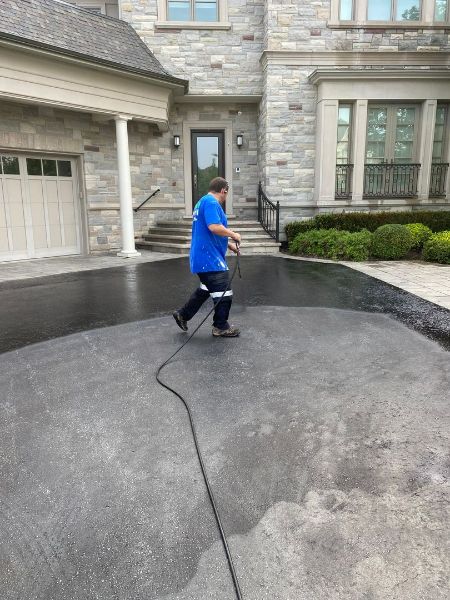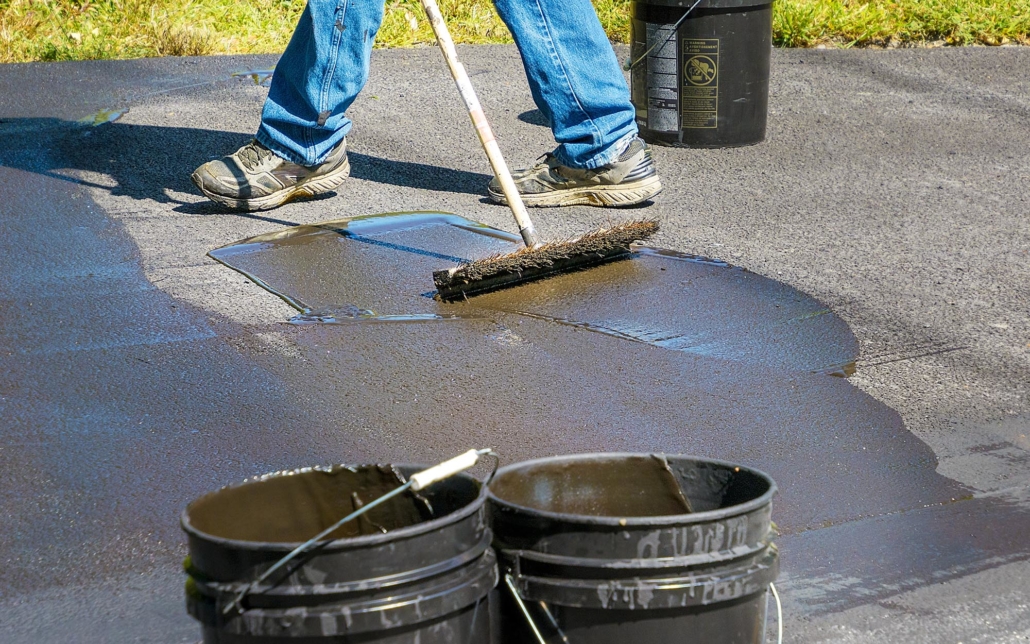Hot Mix Asphalt: A Sustainable Remedy for Pavement
Warm Mix Asphalt (HMA) has actually become a leading lasting selection for pavement services, offering a myriad of environmental advantages and cutting-edge innovations. Its ability to reuse materials and decrease energy consumption provides a compelling situation for its fostering in road building and construction tasks. The lasting efficiency and toughness of HMA make it a preferred alternative for infrastructure development. As the need for environmentally friendly building and construction techniques expands, exploring the nuances of HMA's sustainability can offer beneficial insights right into the future of pavement options.
Environmental Benefits of Hot Mix Asphalt

Furthermore, Warm Mix Asphalt helps to mitigate urban heat island impacts. Its dark shade takes in sunshine, minimizing the quantity of warmth showed back right into the atmosphere compared to lighter-colored pavements. This can lower ambient temperature levels in urban areas, lowering the need for air conditioning and eventually lowering power consumption.
In enhancement, Warm Mix Asphalt contributes to enhanced stormwater administration. Its permeable nature enables water to reenergize and penetrate the sidewalk groundwater materials, decreasing drainage and the threat of flooding. These ecological benefits make Hot Mix Asphalt a sustainable choice for paving highways and roads.
Energy Effectiveness in HMA Production
Is power effectiveness a vital variable in the production of Warm Mix Asphalt (HMA)? Energy plays a substantial function in the manufacturing of HMA, affecting both cost and ecological sustainability. One essential facet of power performance in HMA manufacturing is the usage of warm mix asphalt (WMA) technologies.
Furthermore, innovations in plant technologies have actually resulted in even more energy-efficient HMA manufacturing processes. Modern plants are developed with features like recycled asphalt sidewalk (RAP) handling abilities, reliable heater systems, and boosted insulation, all adding to energy savings. By maximizing power usage in HMA production, the industry can reduce its carbon impact while preserving top notch sidewalk materials. Energy efficiency is, consequently, a vital consideration in ensuring the sustainability of Hot Mix Asphalt manufacturing.
Recyclability of Hot Mix Asphalt
The recyclability of Hot Mix Asphalt (HMA) is a critical facet of its sustainability and long-lasting environmental effect. HMA is one of the most recycled products in the United States, with over 100 million bunches of redeemed asphalt pavement (RAP) being reused yearly in new sidewalk construction. Reusing HMA offers several ecological benefits, such as decreasing the demand for virgin materials, lowering energy usage during production, and reducing the quantity of waste sent out to land fills.
The procedure of recycling HMA entails crushing the existing pavement, squashing it right into smaller sized items, and mixing it with new accumulation and asphalt binder to produce a recycled mix. This recycled mix can Read More Here often execute find this in addition to and even better than traditional HMA, while requiring less raw products and creating lower greenhouse gas emissions. By integrating RAP right into brand-new pavement jobs, road companies can preserve all-natural sources, reduce prices, and reduce the environmental footprint of roadway building and construction and maintenance activities. Generally, the recyclability of HMA plays a considerable duty in promoting sustainable practices within the sidewalk industry.

Long-Term Efficiency of HMA
Asphalt sidewalks demonstrate sturdiness and resilience over a prolonged period, mirroring the lasting performance of Warm Mix Asphalt (HMA) Additionally, advancements in HMA innovation, such as the use of polymer-modified binders and cozy mix asphalt, have actually further enhanced the longevity and longevity of HMA sidewalks. By focusing on high quality construction and upkeep practices, HMA proceeds to show itself as a lasting and cost-efficient solution for durable sidewalk framework.

HMA: Toughness and Sustainability
Demonstrating both durability and sustainability, Hot Mix Asphalt (HMA) has actually become a keystone in the construction of resilient sidewalk regrading infrastructures - regrading. HMA's sturdiness stems from its capability to endure hefty loads, extreme weather condition conditions, and high web traffic quantities, making it a reliable option for streets, highways, and airport runways. The composition of HMA, which commonly includes accumulations, binder, and filler, plays an essential role in enhancing its longevity and resistance to tear and use
Additionally, HMA's sustainability lies in its recyclability and energy-efficient manufacturing process. The ability to reuse recovered asphalt pavement (RAP) in new HMA mixes minimizes the need for virgin materials and reduces the environmental effect of pavement construction and maintenance. Furthermore, the power effectiveness of producing HMA depends on its reduced blending temperature levels compared to various other pavement materials, causing lowered power consumption and greenhouse gas exhausts.
Final Thought
In final thought, hot mix asphalt (HMA) supplies a sustainable option for sidewalk with its ecologically friendly qualities. HMA's recyclability, energy performance in production, and long-lasting toughness make it an environmentally friendly option for road construction.
HMA is one of the most recycled materials in the United States, with over 100 million bunches of recovered asphalt sidewalk (RAP) being reused annually in new sidewalk building and construction.The procedure of reusing HMA includes milling the existing sidewalk, crushing it into smaller sized items, and blending it with brand-new accumulation and asphalt binder to produce a recycled mix.Asphalt sidewalks show longevity and strength over a prolonged duration, mirroring the lasting performance of Warm Mix Asphalt (HMA) Furthermore, improvements in HMA modern technology, such as the use of polymer-modified binders and warm mix asphalt, have actually even more improved the longevity and durability of HMA pavements. The capacity to reuse reclaimed asphalt sidewalk (RAP) in brand-new HMA mixes decreases the need for virgin products and decreases the ecological influence of sidewalk construction and maintenance.